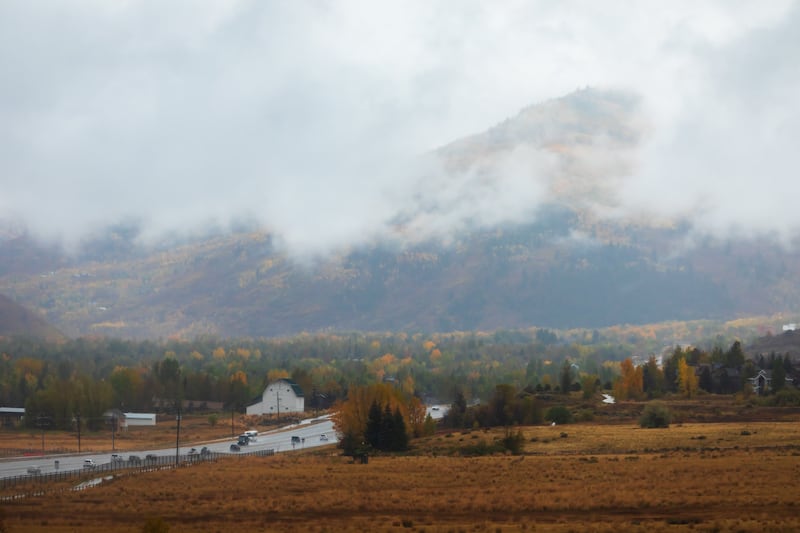The first three weeks of Utah’s 2026 water year have been “outstanding,” but state water managers warn that there’s plenty of ground to make up from the previous water year.
“Yes, we can all collectively say ‘we needed this’ as we think about the recent storms and our water supply. The recent storms are a great start to the water year, but we have a long road ahead,” said Candice Hasenyager, director at the Utah Division of Water Resources, in a state drought update on Tuesday.
Utah collected an average of 3.2 inches of precipitation across 115 mountain sites in the state since the water year began on Oct. 1 — more than double the median average of the past 30 years and less than an inch shy of the record since it was tracked in the 1980s, per Utah Natural Resources Conservation Service data.
Valley communities like Salt Lake City have already shattered monthly precipitation records. This October is among its five wettest months over the last 151 years, even if Utah’s capital city doesn’t collect another drop the rest of the month.
It’s helped lessen drought severity in the state, but 98% of Utah remains in at least moderate drought, including 60% in either severe or extreme drought.

That’s because the 2025 water year was not ideal. Statewide precipitation levels across various mountain sites ended up about 83% of the median average, creating a difference of 5 inches. Salt Lake City’s water year ended up 4.77 inches below its 30-year normal.
The National Centers for Environmental Information typically releases its own precipitation data from a mix of high- and low-elevation sites scattered across the state, but that report is still delayed by the government shutdown.
Utah was on pace for its 10th-driest water year since 1895 after August, following the 2024 water year that was its 38th driest on record, per agency data that remains available. It highlights how the drought expanded so quickly after a record-setting snowpack during the 2023 water year.
While drought persists, this month’s storms produced one key important benefit. Average soil moisture levels across mountain sites are approximately 10 percentage points above the average for this point in the year, which is a good sign.
“In dry years, the ground acts like a sponge, absorbing much of the snowmelt before it can run off into reservoirs. Because our soils are now well-saturated, they are primed for a more efficient spring runoff,” state water officials pointed out in Tuesday’s report.

About 95% of the state’s water supply is tied to mountain snowpack. Utah’s reservoir system reached a peak of 87% capacity this year before tumbling during the hot and dry summer. It’s now 60% full, nearly 12 percentage points below levels this time last year but six percentage points above its median average for October, per state data.
This month’s storms also produced some initial snowpack, but it’s still too early to know how productive this year’s collection will be. Last winter produced mixed results, benefiting northern Utah while central and southern Utah struggled throughout most of the season. This also factored in the state’s drought situation.
However, whatever is collected may have a better chance of ending up in the state’s lakes and reservoirs next spring because of this month’s storms.

